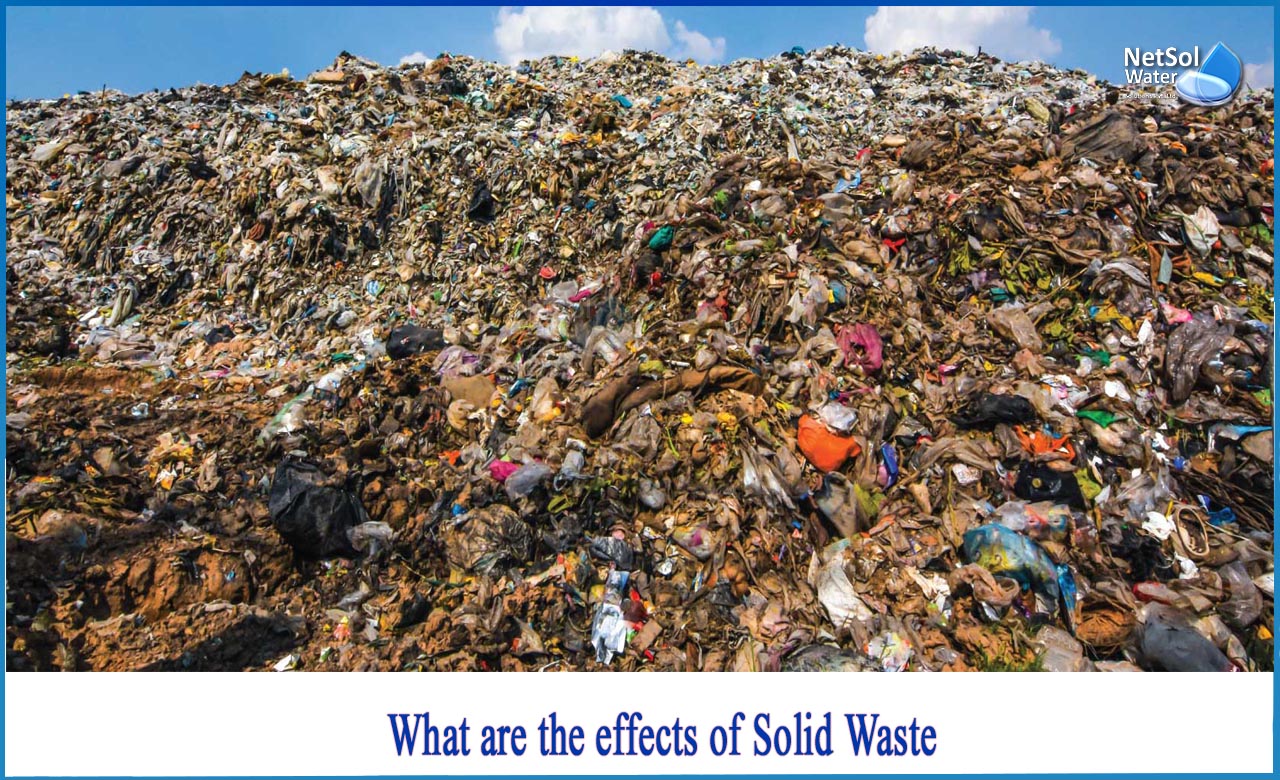What are the effects of Solid Waste?
Wastes are derived through human activities such as agriculture, industry and home activities, among others. Domestic, industrial, commercial, clinical, construction, nuclear, and agricultural waste are the different types of waste. It is categorised as inert, poisonous, or flammable based on its qualities. If the waste is not handled properly, they pollute the air, water, land. As a result, solid waste management is critical.
Effects of Solid Waste
The impact of Solid Waste pollution due to inappropriate treatment and transportation may pollute the air, water and land, leaving a variety of environmental repercussions and posing a health risk.
These negative consequences on health and the environment include the following:
1: Municipal solid waste accumulates on the roadways as a result of an inefficient disposal system. People clean their homes which can affect the immediate surroundings having an impact on the community and on themselves.This causes a horrible odour and grows a variety of insects and pathogenic organisms, in addition to detracting from the aesthetics of the place.
2: Industrial solid wastes contain toxic metals and hazardous pollutants that can spread on land and induce changes in physicochemical and biological properties, reducing soil productivity.Toxic compounds may leak or percolate into ground water causing land and water pollution.
3: Hazardous wastes are combined with other combustible wastes in refuse mixing. This makes segregation and disposal much more complex and dangerous.
4: Cans, pesticides, cleaning solvents, batteries (zinc, lead, or mercury), radioactive materials, plastics and e-waste are mixed in with paper, scraps, and other non-toxic products that may be recycled. When some of these materials are burned, dioxins, furans, and polychlorinated biphenyls are produced, which have the potential to cause a variety of illnesses, including cancer.
5: Leachate from refuge dumps percolates into the soil and contaminates subsurface water.
6: Scavengers and stray animals raid roadside debris and scatter the waste across a vast region, inflicting significant aesthetic damage to the environment.
7: When waste materials such as plastic and rubber are burned, they emit poisonous pollutants into the environment.
8: Organic solid wastes generate a disagreeable odour during decomposition, polluting the environment.
Various health related-risks involved are:
1. Vectors such as rodents and insects infest garbage dumps and spread a variety of illnesses.
2. Disease transmission may occur during the processing and transport of hospital and clinic waste.
3. Fly contamination of water and food causes a variety of ailments in humans, including dysentery, diarrhoea, and amoebic dysentery.
4. Rats living in infectious solid wastes can transmit illnesses such as plague, salmonellosis, trichinosis, endemic typhus, and others.
5. If water supply becomes polluted with microorganisms found in solid waste, it can cause cholera, jaundice, hepatitis, gastroenteritis, and other disorders.
6. The clogging of drains and gully pits by solid waste causes water logging, which encourages mosquito breeding and the spread of illnesses such as malaria and plague.
Conclusion
It is an urgent requirement in today's world to eliminate solid waste pollution. It can be successfully managed through solid waste management. Because it is a challenging endeavour, its major goals are to limit the detrimental consequences and develop methods to use them.
For further information or product purchase related query, contact Netsol Water at +91-9650608473 or drop a mail at enquiry@netsolwater.com.



